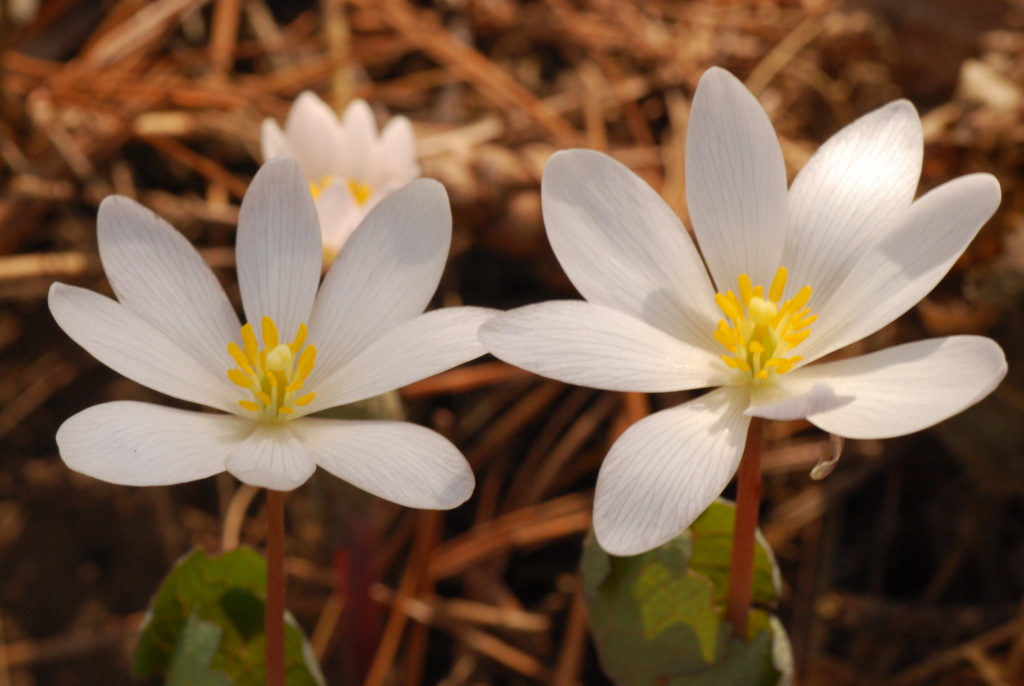
Bloodroot (Sanguinaria canadensis)
Bloodroot, a member of the poppy family, has graceful white blossoms with yellow stamens in the center. The flowers open on sunny days and remain closed on cloudy days and at night. Closed bloodroot flowers in the woods on a cloudy day look like fairy candles.
Bloodroot is one of numerous early spring wildflowers to partner with ants for its survival. Ants pollinate delicate white flowers. When bloodroot seeds form, they come equipped with a fleshy bit of tissue called an elaiosome. Ants find this elaiosome to be a delicious treat. They carry the whole seed down into their nests, feast on the elaiosome, and discard the seed in their underground trash piles. There, the seed is protected and conditions are perfect for it to germinate.
Though the bloodroot flower’s petals drop soon after pollination, the interestingly-shaped foliage stays around for a long time. Double-flowered forms are also available, and while beautiful, these aren’t useful for pollinators. Bloodroot makes an excellent ground cover and can proliferate over a large area if conditions are right. It grows best in rich woodland soils, part shade to full shade.
Bloodroot is poisonous and should not be eaten. Even skin contact with the blood-red sap can cause damage.

